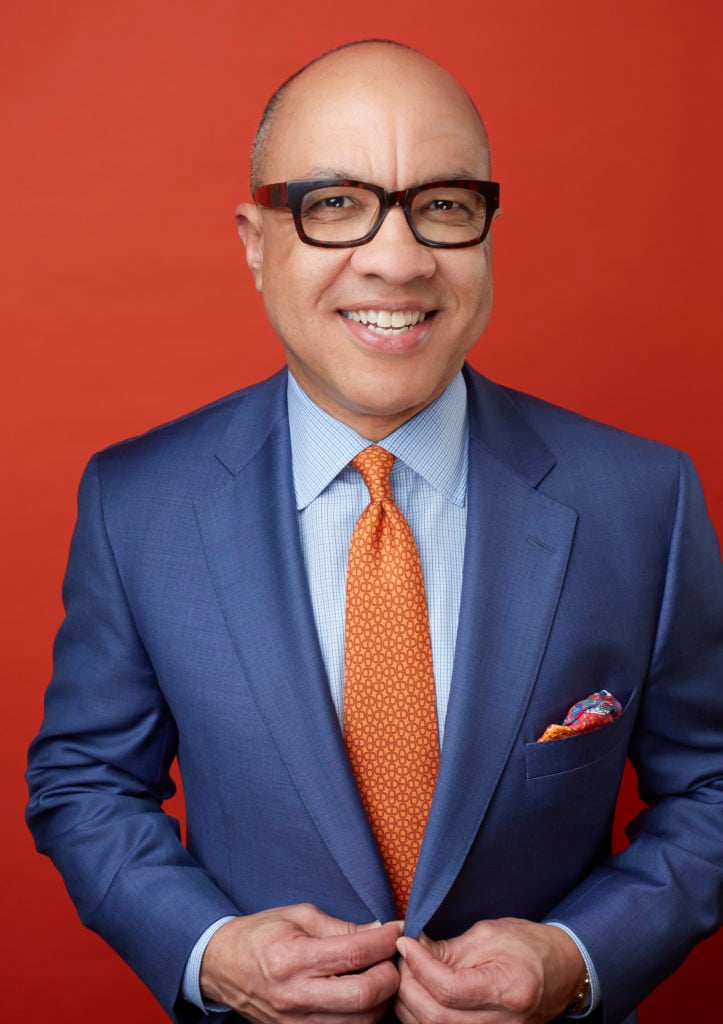Art Industry News is a daily digest of the most consequential developments coming out of the art world and art market. Here’s what you need to know on this Friday, June 26.
NEED-TO-READ
Teenager Who Threw Boy From Tate Modern Gets 15 Years – The teenager who admitted to attempting to kill a 6-year-old boy by pushing him from the 10th-floor viewing platform at the Tate Modern in London last year has been sentenced to at least 15 years in prison. According to prosecutors, Jonty Bravery, 18, had been researching ways to kill before arriving at the Tate, and intended to “prove a point” to his parents so they could see “what a mistake it was not putting him in [the] hospital.” The judge described Bravery as “a danger to the public.” The victim survived, but suffered life-changing injuries, including a brain injury. (New York Times)
Holland Cotter on What to Do With Controversial Monuments – The New York Times art critic supports the decision to remove the Theodore Roosevelt monument from the American Museum of Natural History’s entrance. “[N]o extenuating information can make [it] right,” Cotter writes of the work, which depicts Roosevelt looming over African American and Native American figures. But what to do with this work and other sculptures to enslavers, murderers, and genocidists? Cotter suggests taking Roosevelt off his pedestal, moving him to a gallery, and displaying the sculpture for what it is: “an outsize ethnological specimen, the product of a specific era and culture, now subject to critical evaluation in a different, Black Lives Matter era and culture.” (New York Times)
Darren Walker on Why Philanthropy Won’t Save the American Dream – “The old playbook—giving back through philanthropy as a way of ameliorating the effects of inequality—cannot heal what ails our nation,” the president of the Ford Foundation writes in a new op-ed. “Instead, those of us with power and privilege must grapple with a more profound question: What are we willing to give up?” Among those benefits we must be willing to surrender, Walker argues, are tax policies that bolster wealth; legacy admissions to American colleges; and the expectation that, because of wealth, we are entitled to a place at the front of the line. With these kinds of commitments, he says, “we can reimagine the dream and invite many millions more to share in its promise.” (NYT)
On White Supremacy in Museums – In a searing, honest essay, Kelli Morgan describes her experience as a curator at institutions large and small, all of which failed to support their staff of color. When one museum declined to market a show by a Black artist to Black communities, she recounts printing and hand-delivering flyers herself. “After six years of working as a museum curator—at a small, a mid-size, and, currently, a very large institution—I’ve learned how nefarious the culture of white supremacy in art museums really is,” she writes. (Burnaway)
ART MARKET
Christie’s Secures Contemporary Stars for London Sale – Christie’s is continuing to assemble material for its global relay-style auction on July 10. The latest lots are Adrian Ghenie’s The Arrival 3 (2015), estimated at £3 million–£5 million ($3.7 million–$6.2 million), and Cecily Brown’s Carnival and Lent (2006–8), estimated at £4 million–£6 million ($4.7 million–$7.5 million). Both will be offered in London. (Press release)
Tom Wesselmann Catalogue Goes Online – The Wildenstein Plattner Institute in New York is launching a digital catalogue raisonné of the work of American pop artist Tom Wesselmann. The project—the latest in a wave of online catalogues—will be easily searchable and free to access. (Press release)
Sotheby’s to Sell Late Financier’s Collection – Sotheby’s has nabbed the estate of Felix Rohatyn, the lawyer and investment banker who helped New York City avoid bankruptcy in the 1970s and died last year at 91. In addition to his active public life, Rohatyn was a dedicated private collector, assembling a trove of Old Masters. More than 40 of those works will be offered in a dedicated sale, including examples by Canaletto and Bellotto that may sell for as much as $5 million each. (Wall Street Journal)
COMINGS & GOINGS
Berkeley Art Museum Names a New Director – The University of California Berkeley Art Museum and Pacific Film Archive has named Julie Rodrigues Widholm as its new director. Windholm, the current director and chief curator of the DePaul Art Museum in Chicago, begins her new role August 1, succeeding Lawrence Rinder. (New York Times)
Mexican Abstract Master Manuel Felguérez Has Died – One of the earliest pioneers of abstract art in Mexico has died at age 91 of COVID-19. Felguérez famously broke away from the nationalistic muralist style of the “big three” (Diego Rivera, José Clemente Orozco, and David Alfaro Siqueiros) to create complex abstract compositions and organic sculptures. (The Art Newspaper)
FOR ART’S SAKE
Warhol Foundation Awards $4 Million to Regional Arts Organizations – The New York–based organization will award $4 million to 47 arts organizations in the US to support exhibitions, curatorial research, and programming. New York’s El Museo del Barrio, the Museum of Contemporary Art Chicago, the Black Lunch Table in Chicago, and Tri-Star Arts in Nashville are among the awardees. (ARTnews)
Why Lockdown Has Brought the Idea of Community Back to Art – Elinor Morgan, the program head at Middlesbrough Institute of Modern Art in England, says that during lockdown, her team has had to reevaluate business as usual. “As a sector, we need think hard about what it is we value and why. We clearly have to be more attuned to the world; we need to be more diverse, to develop new ways of working and new ways for people from different backgrounds to access the arts,” she writes. Key to this, in her opinion, is bringing the work of museums into the wider community and its spaces, like schools. Even after lockdown, large groups and disadvantaged community members may not be able to visit. (Guardian)
Wolfgang Tillmans’s Foundation Raises Half a Million in Two Months – The photographer enlisted 50 artists to create posters to benefit nightclubs, art venues, and grassroots spaces around the world that were suffering due to lockdown. In the two months since launching, the project has raised $500,000. Artists including Glenn Ligon, Nicole Eisenman, and Elmgreen & Dragset contributed limited-time, unlimited-edition A2 posters, which are all priced at $50. (Press release)

Courtesy Between Bridges.










